Books Like Sword Art Online Progressive 1 Light Novel
50 Best Japanese Books of All Fourth dimension
50 Best Japanese Books of All Time
by David McElhinney & Volition Heath | Art
Choosing the l all-time Japanese books ever written is a awe-inspiring task, invariably leading to the omission of so many wonderful works of literature. After all, Japan has given rise to some of the world'due south all-time writers, both past and nowadays, with styles that have borrowed from and further informed Western literature. But here are 50 books that, together, speak to the rich history of literature in Japan.
The list includes classic novels, revolutionary works of contemporary fiction, autobiographical treatises, singular compilations, and a sprinkling of manga. These books are presented in no item order – and then which would make your top 10?
1. The Tale of Genji past Murasaki Shikibu
Translated by Edward Seidensticker
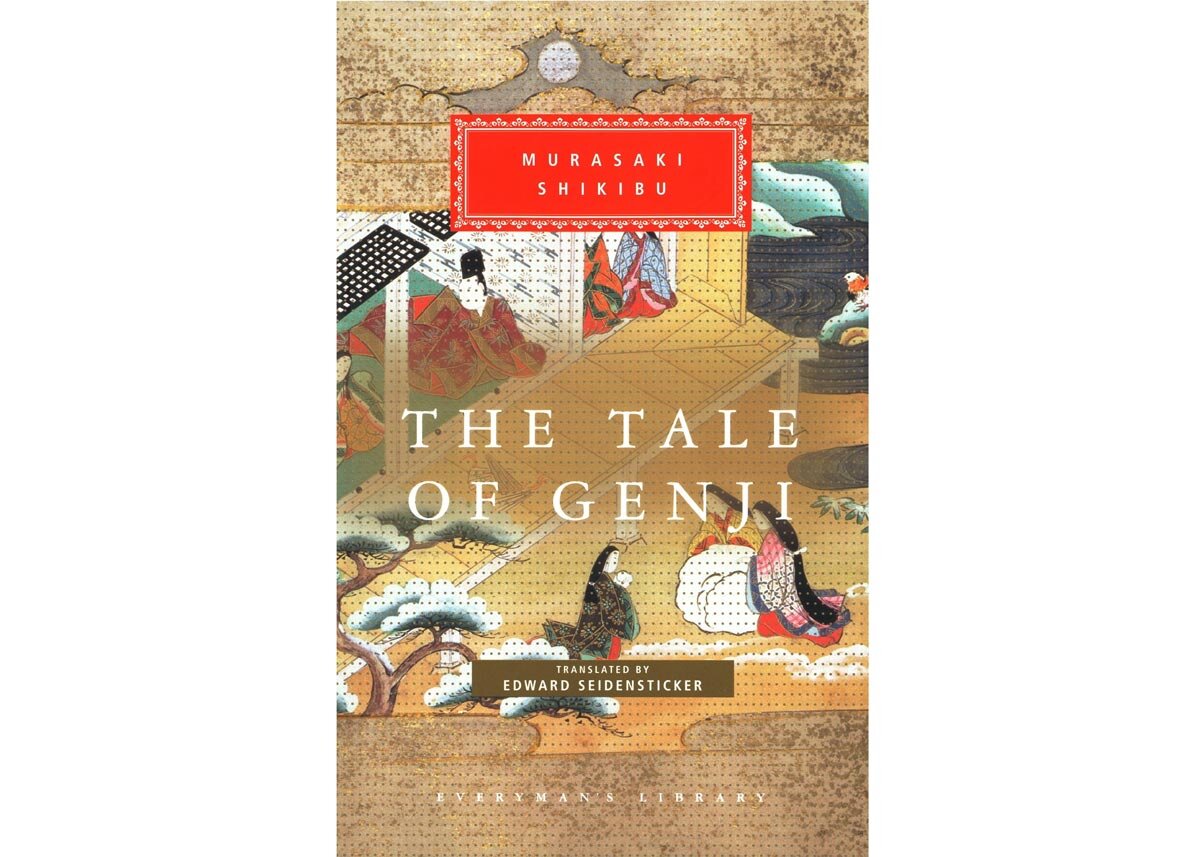
Why Should I Read This Book? This is where Japanese literature began.
Murasaki Shikibu was an educated noblewoman of Heian flow Nippon, and writer of what near consider to be the world'south start novel. The Tale of Genji is widely agreed to exist the finest work of literature in Japanese history, so much and then that ukiyo-e artists of the Edo menstruum dedicated their lives to painting visual recreations of scenes from Shikibu'southward novel in woodblock prints (check out The Tale of Genji in Japanese Fine art). Few works are as revered as The Tale of Genji, which tells the story of an emperor'south son who is removed from the line of succession.
The Tale of Genji – Available at Amazon
2. I Am a Cat past Natsume Soseki
Translated past Aiko Ito and Graeme Wilson
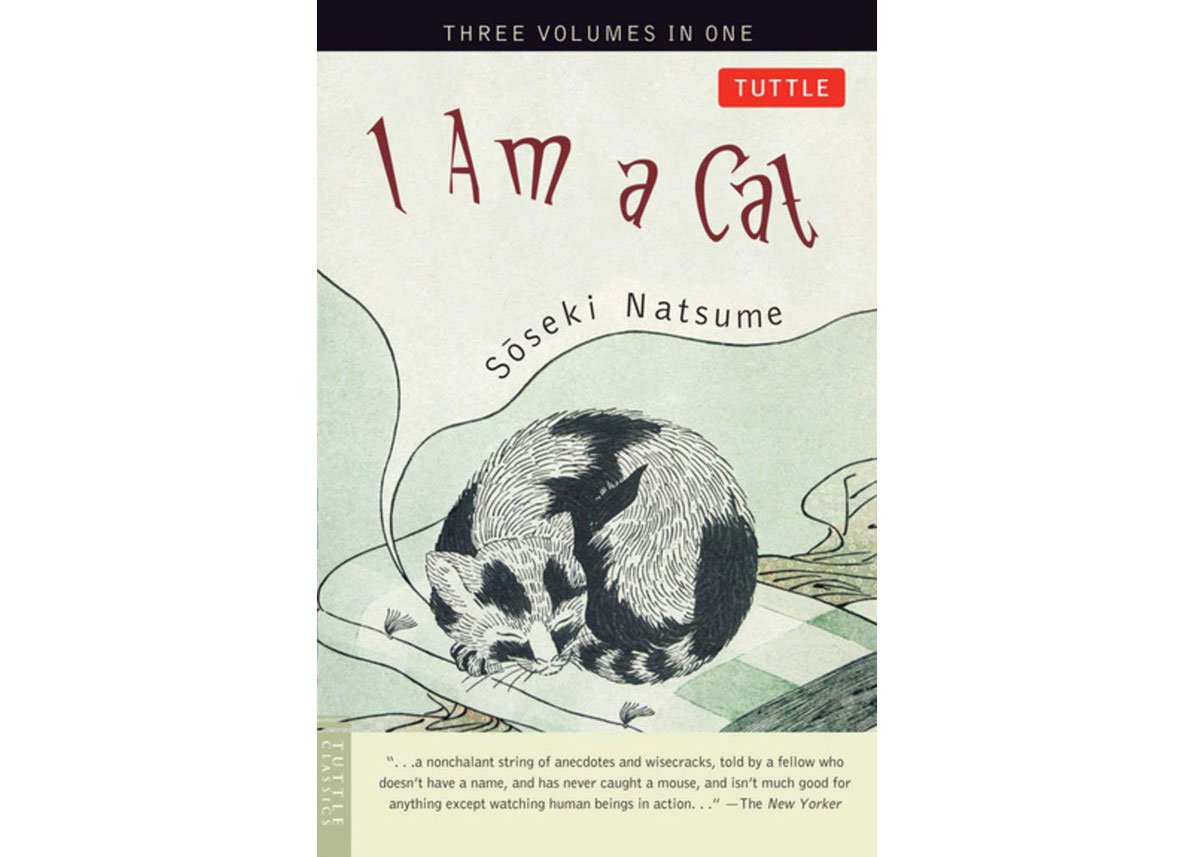
Why Should I Read This Book? It's a tale of Meiji-era Japan from the perspective of Japan's favorite domestic creature.
Japan loves house cats, and Natsume Soseki's I Am a True cat is a satirical ode to the nation'southward favorite, and virtually supercilious, feline. Written in the early 1900s, Soseki'southward novel is also a portrait of the uneasy Due east-West fusion Nippon was experiencing during the Meiji era. Told from the cat protagonist'south perspective equally it wanders the neighborhood eavesdropping on gossiping residents, Soseki created a quintessentially Japanese piece of work of literature that has rightly stood the tough test of time.
I Am a Cat – Available at Amazon
3. The Woman in the Royal Skirt by Natsuko Imamura
Translated past Lucy N
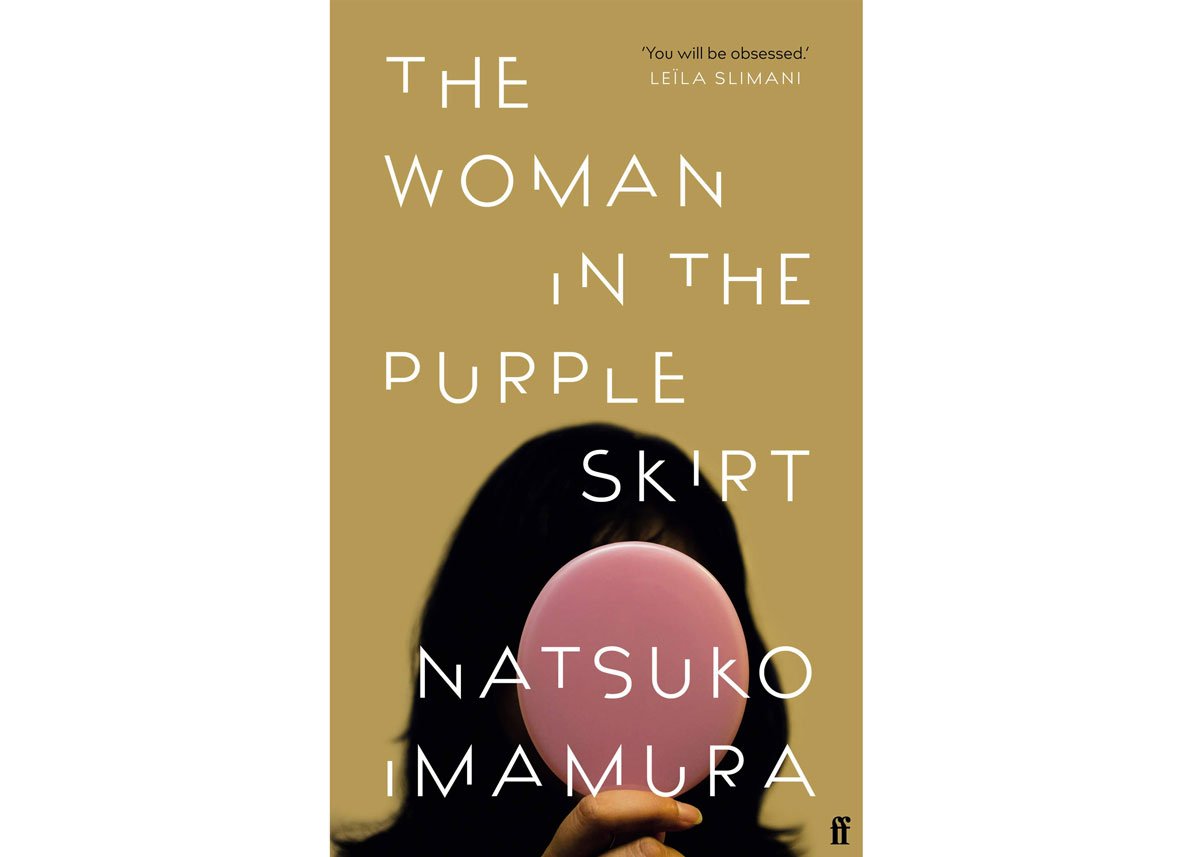
Why Should I Read This Book? Information technology's i of Japan'due south best contemporary writers spreading her literary wings.
Another book that puts laser focus on the lives of down-and-out women in modernistic Nippon, The Woman in the Purple skirt is as powerfully idea-provoking as it is deadpan funny. The Adult female in the Xanthous Cardigan is our narrator, a stream-of-consciousness voyeur, who has an obsession with the Woman in the Purple Skirt. The story is congenital around the dynamic betwixt the narrator and her subject area, wrapped upward in a world of office politics and the pressure of social mores. This originality of style and prose helped Imamura bag the coveted Akutagawa Prize for the volume in 2019.
The Woman in the Purple Brim – Bachelor at Amazon
4. The Reason I Jump by Naoki Higashida
Translated by KA Yoshida and David Mitchell

Why Should I Read This Book? It's an unprecedented exploration of living with non-exact autism.
Written by Naokai Higashida, a and then xiii-yr-old male child who lives with non-exact autism, The Reason I Bound provides profound insights into the mind of those diagnosed with his status. Using a "paper-thin keyboard", Higashida learnt to communicate his thoughts, feelings and chapters for emotion, which is elucidated in this heart-wrenching tale; an exploration of the inner-workings of an autistic heed. The translation by author David Mitchell and his married woman KA Yoshida is particularly poignant, as Higashida's story allowed them to empathize their own autistic child in a way that they had never before conceived.
The Reason I Jump – Available at Amazon
five. Snow Country past Yasunari Kawabata
Translated past Edward Seidensticker

Why Should I Read This Book? It is the most aesthetically beautiful and sublime Japanese novel.
Nobel Prize winner Yasunari Kawabata is one of Nippon'south virtually beloved and revered novelists. An aesthete of splendid skill with words, he wrote some of the about beautiful novels always penned. While in that location's an endless argue over which is his finest work, Snowfall State is the one that most perfectly encapsulates his aesthetics and obsession with art and dazzler. Snow Land is a beloved story between a Tokyo human being and a geisha who lives and works in a mountainous onsen town. It is bleak and stark and poetically magnificent.
Snow Country – Available at Amazon
half dozen. The Silent Cry by Kenzaburo Oe
Translated by John Bester

Why Should I Read This Book? Oe represents the family struggles of 20th century Nippon.
Kenzaburo Oe was another of Nihon's Nobel Prize winners, and his books are oft intimate family affairs that touch on politics just mostly focus on the pain that comes with family. The Silent Weep is his most polished and rounded example of this theme, telling the story of two brothers in the 60s who render to their babyhood hamlet. 1 travels from Tokyo, and the other from the United states. Both take new-found baggage and bring it with them to a dwelling house that is existence changed by the tides of modernity. It's a volume most change, both personal and national; a brutal and harsh novel but a piece of work of true mastery.
The Silent Cry – Bachelor at Amazon
7. Kokoro by Natsume Soseki
Translated by Meredith McKinney
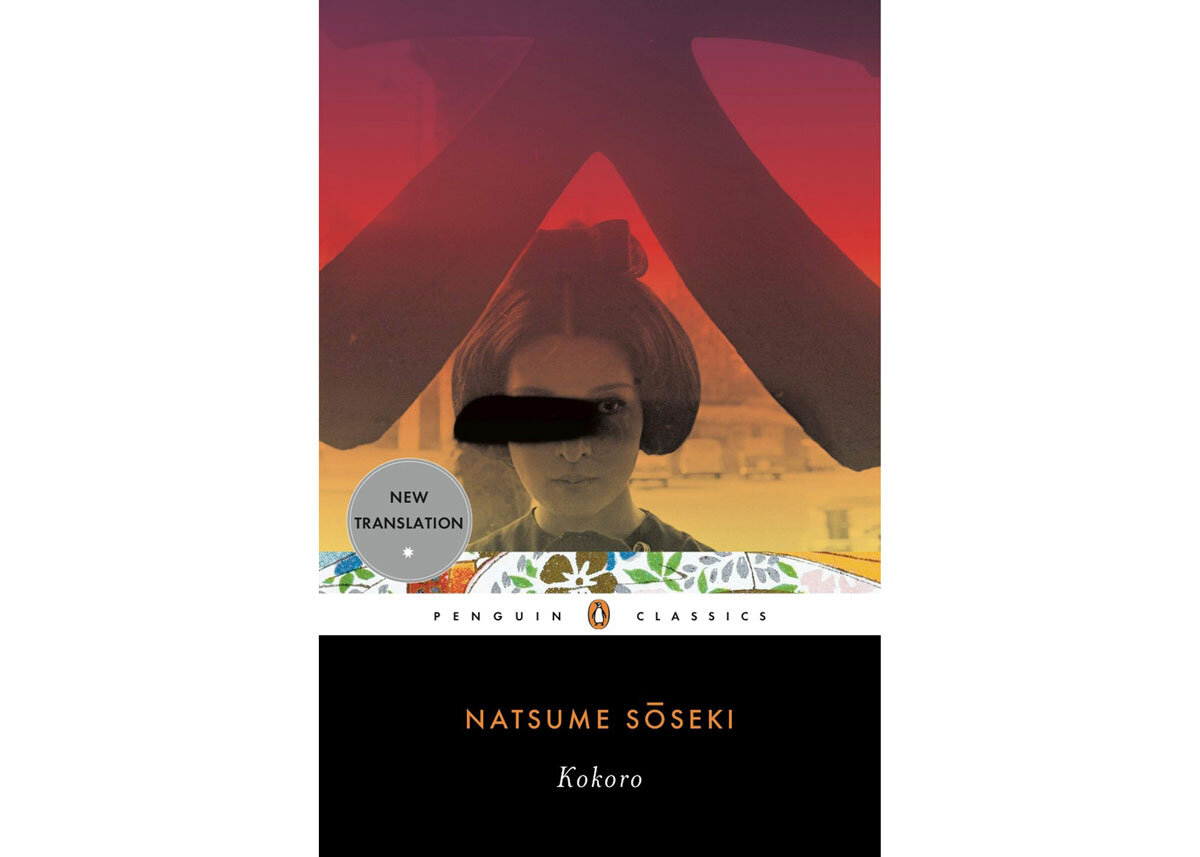
Why Should I Read This Volume? To this 24-hour interval, Natsume Soseki is Japan's all-time-loved novelist.
While The Tale of Genji is Nihon's most renowned novel, the nation'south most love author is undoubtedly Natsume Soseki. This fascinating novelist penned several treasured books, but his finest is certainly Kokoro (centre). Ready between Kamakura and Tokyo, the novel explores in three parts the human relationship between a young and impressionable man and his sensei, whom he then intensely admires. It switches perspectives halfway through, providing a touching, detailed, and transparent three-dimensional perspective on these men and their relationship. For more than, see the 20 Best Japanese Authors of All Time.
Kokoro – Bachelor at Amazon
8. Rashomon past Ryunosuke Akutagawa
Translated by Takashi Kojima

Why Should I Read This Book? It is a curt story that speaks to Japanese award and the fight to stay alive.
Rashomon is named later the ruined gate of southern Kyoto (which, in plow, was named after a famous Noh play). Akutagawa's short story tells the tale of a servant who finds himself in the cleaved Rashomon, racked by the selection between starving to death and fighting to survive, until he meets an one-time woman in the gate who has already made her own choice. This story, which is oftentimes sold equally function of a collection, was written by the same Akutagawa that Nihon's most prestigious literary prize is named after.
Rashomon – Available at Amazon
nine. No Longer Human being by Osamu Dazai
Translated by Donald Keene
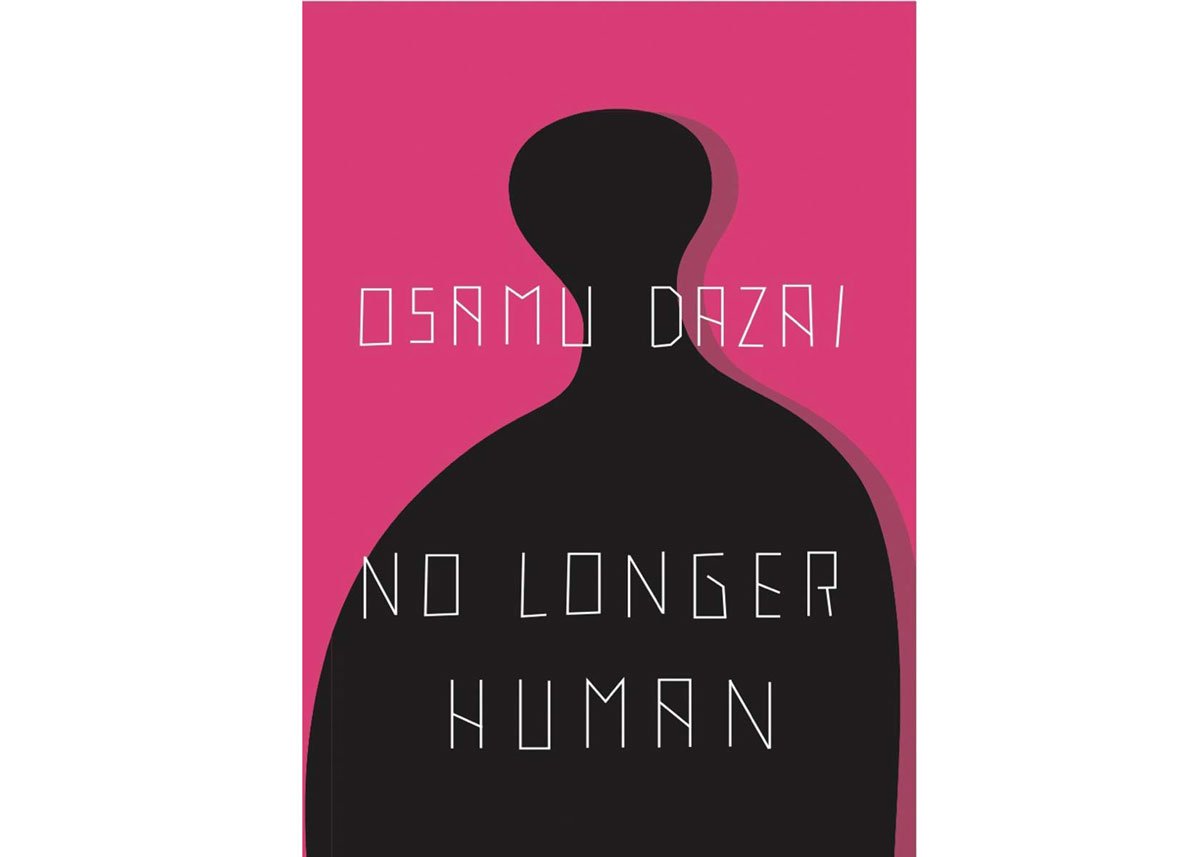
Why Should I Read This Volume? It's a semi-autobiographical tale from one of Nihon's greatest, yet most troubled, Meiji-era authors.
The concept of traditional life clashing with Western assimilation was a common theme of 20th-century Japanese literature, and No Longer Man tackles this trope in such an indelible mode that information technology remains i of the bestselling novels always in Nihon. Told through the diary entries of protagonist Oba Yozo (in many ways a facsimile of the author), information technology portrays a troubled character who hides behind the mask of a clown while battling his own internal demons. Masterfully juxtaposing the depths of psychological despair with the fleeting moments of connection that brand a life worth living, Dazai's final masterpiece will alive long in the memory.
No Longer Homo – Available at Amazon
10. The Book of Five Rings by Miyamoto Musashi
Translated past William Scott Wilson

Why Should I Read This Book? It's a rulebook on the fashion of the warrior from Japan's greatest always warrior.
In 1643, undefeated afterward 61 duels, Japan's well-nigh fearsome samurai, Miyamoto Musashi, retreated to the sepulchral confines of a cavern and wrote The Book of 5 Rings, an exploratory treatise of swordsmanship, strategy and heed over matter. His clear and concise text remains the holy grail of martial arts manifestos and is still used by practitioners almost 400 years later. The book'southward fundamental teachings around self-control and hard work have proved then timeless that many take been appropriated and utilized past people in all walks of modern life.
The Book of Five Rings – Available at Amazon
11. Breasts and Eggs past Mieko Kawakami
Translated past Sam Bett and David Boyd

Why Should I Read This Book? It's a bestselling novel well-nigh motherhood, cede and freedom.
Split into two sections, Breasts and Eggs follows the life of narrator Nastuko in long vignettes eight years autonomously. Natsuko is a novelist who yearns to bear children but is repulsed past the thought of sex, and so weighs upwardly a path generally forbidden to Japanese unmarried women: artificial insemination. The volume is a scything dissection of the struggles faced by working-class women in Japan, only heightened by Kawakami'south rough-and-tumble Osaka dialect which is ever-present in her writings.
Breasts and Eggs – Available at Amazon
12. The Tale of the Heike by Multiple Authors
Translated past Royall Tyler

Why Should I Read This Book? This is the father of all samurai stories.
Often compared to Homer'south Illiad, The Tale of the Heike is an epic of Japanese – and subsequently world – literature, compiled from 14th-century poems and stories which were built-in out of an oral storytelling tradition. Charting the course of the disharmonize betwixt the great Heike and Genji clans, the volume is one of grand battles, daimyo power struggles, the plight of the commoner, and of the interplay betwixt spirituality and war. A classic for the ages and required reading for any students of ancient Japanese history.
The Tale of the Heike – Available at Amazon
13. The Narrow Road to the Deep Northward by Matsuo Basho
Translated past Nobuyuki Yuasa

Why Should I Read This Volume? These poems capture the unique tranquillity and dramatic beauty of rural Nippon.
A mix of prose and poesy that represents one of the major works of poetry of the Edo period of Japan. Basho'south The Narrow Road to the Deep N chronicles the journey which Basho took with a travelling companion, out of Tokyo (or Edo, as it was known at the time) and into the rural wilds of the northward. Information technology's a beautiful and descriptive exploration of the natural wonders of Edo Japan. Nothing like it exists in the entire library of Japanese literature.
The Narrow Route to the Deep North – Available at Amazon
14. The Sailor who Cruel from Grace with the Sea by Yukio Mishima
Translated by John Nathan

Why Should I Read This Book? It is a controversial tale by a dark figure of Japanese literature.
Yukio Mishima is a controversial figure, to say the to the lowest degree. While he was an out-and-out fascist who committed seppuku after a failed coup, he did provide us with some idea-provoking works of literature that not only let us a window into his mind and his demons, only too into the shifting modernisation of 20th century Japan. The almost clear-cut of his works is The Sailor who Fell from Grace with the Sea: a metaphorical tale about a young male child who becomes obsessed with his mother's new boyfriend. This boyfriend is a sailor whom the lad respects, until he chooses love over the cracking wide open, and the boy takes this as a betrayal. Information technology's a heavy political metaphor and one of the most important works of Japanese literature.
The Sailor who Fell from Grace – Bachelor at Amazon
fifteen. The Makioka Sisters past Junichiro Tanizaki
Translated past Edward Seidensticker

Why Should I Read This Book? This is a unique glimpse into the dying world of Japanese gentry in post-war Osaka.
Perhaps the closest Japan ever gets to a Jane Austen-style novel, The Makioka Sisters is Tanizaki'due south magnum opus. It tells the story of a rich family of Osaka gentry at a pivotal time in the 20th century when that particular class of people was condign outdated and beginning to fade into obscurity. In that regard, it follows similar themes and aesthetics as Downton Abbey. To this day, information technology is revered as one of the smashing classics of Japanese literature, capturing a shifting moment in time that volition never come again.
The Makioka Sisters – Available at Amazon
16. The Wind-Up Bird Chronicle by Haruki Murakami
Translated by Jay Rubin

Why Should I Read This Book? This is Japan'south most popular modern author at his absolute best.
Haruki Murakami is easily Nihon's most popular living novelist, often predicted to win the Nobel Prize just, as of still, e'er missing out. Murakami has a large catalogue of work, almost of which is surreal and famous for its repeated themes and tropes. The Wind-Upward Bird Chronicle is Murakami'due south magnum opus. Here's the Murakami novel that all-time exemplifies his infamous tropes and themes; it is perfectly paced and offers a story most anxieties and existential crises, wrapped upward in surreal and impossible scenarios that make for a fun and thrilling read.
The Wind-Upwardly Bird Chronicle – Available at Amazon
17. A Personal Matter past Kenzaburo Oe
Translated by John Nathan

Why Should I Read This Book? It provides a window into the troubled life of Kenzaburo Oe.
A Personal Matter is exactly that, a semi-autobiographical tale written in the poetic prose of Kenzaburo Oe. The story follows Bird, a sharp individual whose declining matrimony is thrown into further disarray after his married woman gives birth to a brain-damaged child. Exploring the human relationship Oe has with his own disabled child, the book reaches into uncomfortable areas of the homo psyche, every bit Bird struggles with shame and regret, all set against the backdrop of a Japan still crawling out from the wreckage of World State of war Two.
A Personal Matter – Bachelor at Amazon
18. Vibrator by Mari Akasaka
Translated past Michael Emmerich

Why Should I Read This Book? It'southward one of the about poignant studies of mental wellness in mod Japanese fiction.
A troubled journalist, the wintry wilds of the Japanese hinterlands, and a tale of escapism and desire make for an unruly combination in this punchy work past Mari Akasaka. Protagonist Rei Hayakawa hitches a ride with a trucker through northern Japan in an attempt to practise in her "vibrating" demons and reclaim her humanity. Her journeying results in a stream-of-consciousness study of mental wellness that deserves its identify in the pantheon of modern Japanese fiction.
Vibrator – Available at Amazon
19. Boxing Royale by Koushun Takami
Translated by Yuji Oniki

Why Should I Read This Volume? It'south The Hunger Games Japanese-mode.
Battle Royale is a blood-splattered, fight-to-the-decease thriller featuring a class of high-school kids consigned to an island off the coast of what was once Japan. The hefty 600-plus page novel – later on adjusted into a motion picture of the same proper noun featuring the inimitable Takeshi Kitano – might best be described equally The Hunger Games meets vehement anime in an Orwellian dystopia. The result of this bizarre abracadabra is a volume that will continue you lot on your toes every bit the contestants battle for survival. But what moves Takami's work beyond a mere shock-value slasher are the securely human and nuanced back stories of its principle characters, which in turn, inform their willingness (or otherwise) to play the game.
Battle Royale – Available at Amazon
20. Night on the Railroad past Kenji Miyazawa
Translated by Julianne Neville

Why Should I Read This Volume? It's a fantastical compilation from ane of Japan's well-nigh honey authors.
Written in the early 20th century, Night on the Galactic Railroad is a pre-Tolkien, galaxy-traversing fantasy built-in out of Miyazawa's honey of the stars. The collection of stories inside are thematically connected by the creation and an elemental quality that resembles Nippon's connection to the natural world. The most famous tale, also called Night on the Galactic Railroad, is a Steven King-esque story (minus the gore) that shines low-cal on the infallible power of babyhood friendships.
Night on the Railroad – Available at Amazon
21. Out by Natsuo Kirino
Translated by Stephen Snyder

Why Should I Read This Book? It is a scathing and harsh story of Japanese feminism.
Natsuo Kirino is i of the great Japanese feminist authors - possibly the greatest of them. And while she has written works of varying styles and genres, Out is the volume that best personifies her acrimony and grief. It tells the story of a factory worker who, finally pushed to her limits, murders her married man and seeks the help of her female work colleagues in order to cover up the killing. It's a dark thriller that escalates further and further across hundreds of tightly written and tautly stretched pages of narrative.
Out – Available at Amazon
22. The Pillow Volume by Sei Shonagon
Translated by Meredith McKinney

Why Should I Read This Book? Information technology is a wildly clever, amusing and unique collection of notes on imperial life more than than thou years ago.
There is nothing in the globe similar The Pillow Book. Sei Shonagon was a court lady and, during her time in the purple court of Heian, she penned many essays, musings, anecdotes, and even poems about the people and events of the purple court. This is an amusing and eye-opening insight into the lives of the most powerful people in Nihon more than than a millennium agone. A completely unique and fascinating volume from a uniquely female person perspective.
The Pillow Volume – Available at Amazon
23. The Housekeeper and the Professor by Yoko Ogawa
Translated past Stephen Snyder

Why Should I Read This Book? Hither is a unique story of beloved that is non, strictly, a love story.
Yoko Ogawa is one of mod Japan's about treasured authors, and she has penned many books in many genres, merely her nearly man and emotionally resonant novel is easily The Housekeeper and the Professor. Information technology tells the story of an aged genius mathematician who now has a memory that resets each mean solar day. His newest housekeeper, our narrator, forms a unique and lasting bond with the professor, and the mathematician even develops a paternal relationship with the housekeeper's young son. In that location are few novels as beautiful as this 1.
The Housekeeper and the Professor – Bachelor at Amazon
24. Territory of Light by Yuko Tsushima
Translated by Geraldine Harcourt
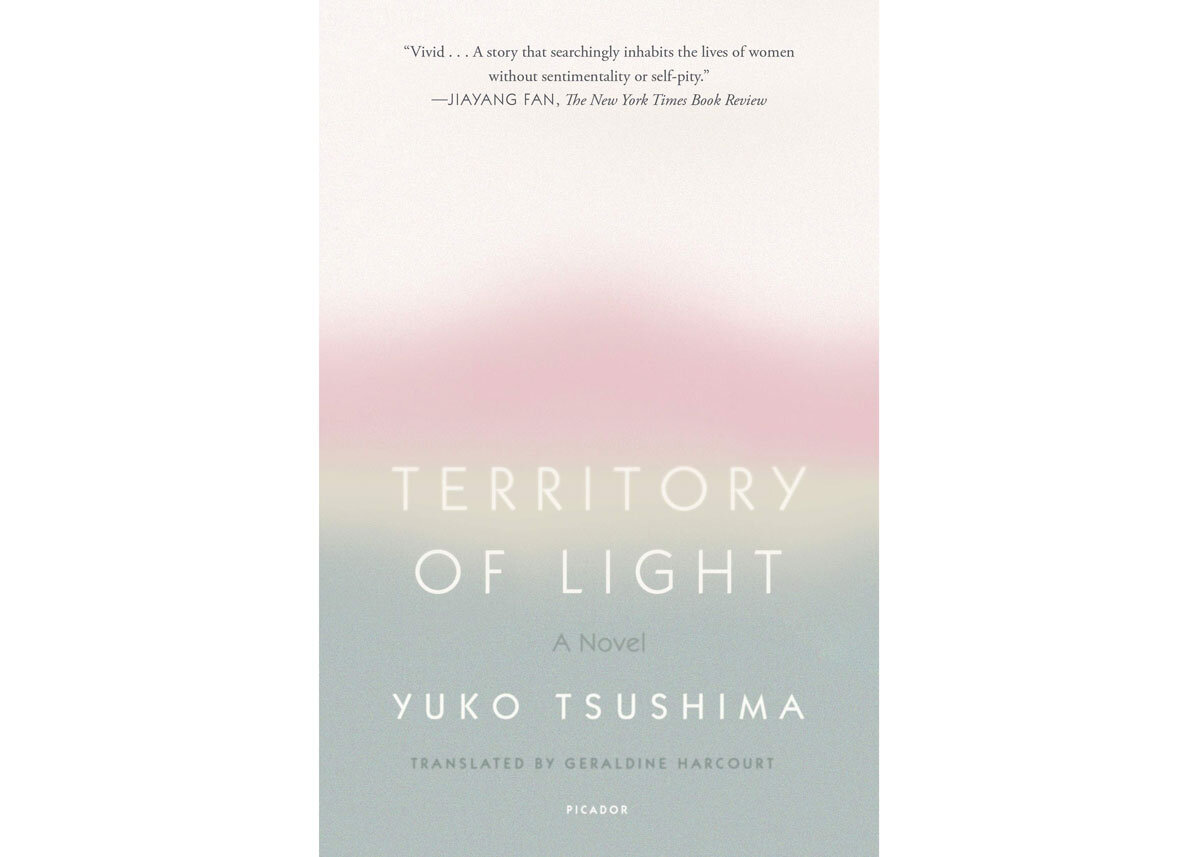
Why Should I Read This Book? It is one of the most calmly and quietly aesthetic novels ever written.
A young woman with a ii-year-erstwhile daughter has separated from her husband and, now, lives with her daughter in a new apartment that is flooded with natural light. This short and beautiful novel charts her story beyond twelve months after her separation from her husband. It looks at what kind of person she becomes without him: the choices she makes and how she reacts to the globe around her. A small, quiet, and serene tale of hope and bleakness.
Territory of Light – Available at Amazon
25. Convenience Shop Woman by Sayaka Murata
Translated past Ginny Tapley Takemori

Why Should I Read This Book? Murata represents the working course of 21st century Nihon.
There are few novels as politically and socially of import as Convenience Store Adult female. This novel made headlines the world over for being a unique take on the state of working life in Japan. It follows the life of a convenience store clerk who has worked the task for eighteen years and is perfectly happy with her lot in life. This is a book virtually expectations, corporate ladders, and social stresses. It's a biting, sarcastic, venomous book written with passive assailment that makes information technology electrical and addictive. A true modern classic.
Convenience Store Woman – Available at Amazon
26. Band by Koji Suzuki
Translated by Glynne Walley

Why Should I Read This Book? Information technology'due south the source cloth for the famous horror flicks of the same name.
Band is perhaps better known for its two nightmarish film adaptations: 1998'south Ringu (in Japanese) and the subsequent 2002 Hollywood archetype, The Ring. Dread is the key emotion that permeates Suzuki'due south tale of an abstruse videotape, that in one case watched, informs the viewer they will come across their expiry in one week. Asakawa, a workaholic announcer, makes his way from Tokyo to a sleepy Izu mountain town to uncover the video's secrets.
Ring – Available at Amazon
27. Lost Nihon by Alex Kerr

Why Should I Read This Book? It's a beautiful eulogy of traditional Japanese culture.
When Alex Kerr moved to Japan in the 1970s, it wasn't long before he started to envisage life as a lonely sage, living in a thatched-roof house in the mountains of Tokushima Prefecture. And information technology's this romantic fascination with pre-industrial Japan and its artistic heritage that Kerr explores in Lost Japan. Originally written by the bilingual American in Japanese, information technology both paid homage to Japan's traditional culture, whilst lamenting the changes of modernity that were causing its reject. From kabuki to bunraku, few stones are left unturned in a volume that ensured Kerr was the start ever non-Japanese winner of the prestigious Shincho Gakugei literature award.
Lost Nihon – Available at Amazon
28. Taiko: An Epic Novel of War and Glory in Feudal Nippon past Eiji Yoshikawa
Translated by William Scott Wilson
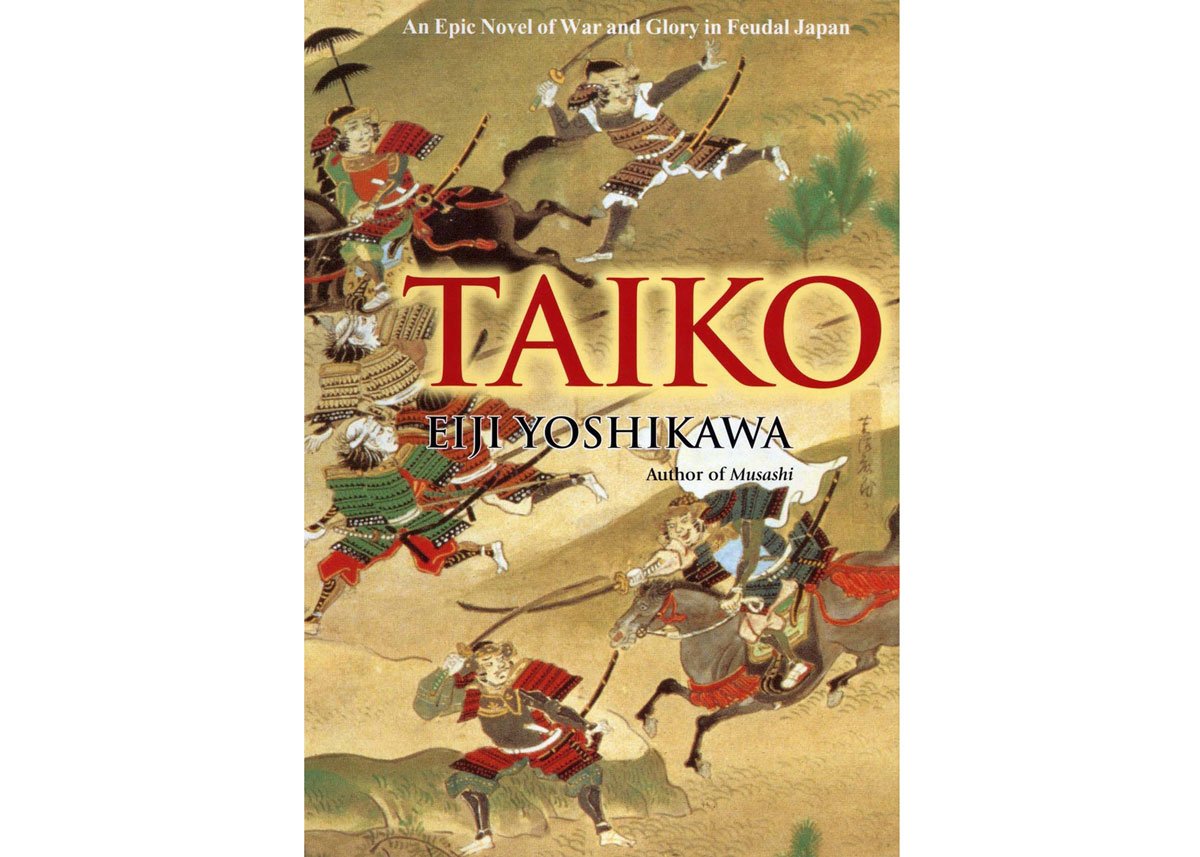
Why Should I Read This Book? It artfully recounts of one of the bloodiest, and most formative, periods of Japanese history.
The Sengoku era (1415 – 1603) was brought to a shut in the concluding decades of the 16th century every bit three warlords subsequently strove to unite a country long steeped in brutal warfare. Oda Nobunaga, Toyotomi Hideyoshi, and later Tokugawa Ieyasu, were embroiled in power struggles, covert plots, bloody insurrections, and epoch-defining battles in their search to unite Japan under one banner. Eiji Yoshikawa'south Taiko is the definitive, dramatized retelling of this period of history that would alter the fate of Japan forever.
Taiko: An Epic Novel of War and Glory – Available at Amazon
29. The Seven Samurai and Other Screenplays by Akira Kurosawa
Translated past Donald Richie

Why Should I Read This Volume? It contains three screenplays by Japan'due south greatest cinematic auteur.
Few filmmakers in the pantheon of global picture palace sit down on as high a pedestal as Akira Kurosawa, the trailblazing auteur who brought us Rashomon, Yojimbo, and The Seven Samurai, and was credited as a major inspiration for the Spaghetti Western craze which engulfed Hollywood in the 1960s. In this anthology, translated by the smashing Japanophile Donald Richie, are iii of Kurosawa'due south nearly indelible works: Ikiru (1952), a Hemmingway-like story of a ceremonious servant coming to terms with death; the Macbeth-inspired Throne of Claret (1957); and arguably the greatest of them all, The Seven Samurai (1954).
The Seven Samurai – Available at Amazon
30. Apparitions past Miyuki Miyabe
Translated by Daniel Huddleston

Why Should I Read This Book? Information technology explores the supernatural influences that permeated Edo-period Japan.
From Shintoism to kaidan (ghostly folklore), Japanese culture has never been uncomfortable with the supernatural, and Miyuki Miyabe's Apparitions is an ode to this truth. Fusing journalism, and deep-swoop historical enquiry with a touch of macabre fantasy, she explores the supernatural behavior of the time through a collection of stories that focus every bit much on the lives of its characters as the spirits of death that surround them.
Apparitions – Available at Amazon
31. Strange Weather condition in Tokyo by Hiromi Kawakami
Translated by Allison Markin Powell

Why Should I Read This Book? One of Nippon'due south most charming beloved stories.
Hiromi Kawakami has a habit of writing spectacularly human characters of all ages. She understands love and friendship better than most authors, and that is best exemplified in Strange Conditions in Tokyo. This novel follows the blossoming romance betwixt a xxx-something salarywoman and an ageing Japanese teacher who was once her own sensei. The story metaphorically explores the marriage between traditional Japan and the new corporate world of mail-war Tokyo, and it is one of the sweetest, kindest novels you'll ever read.
Strange Weather in Tokyo – Available at Amazon
32. Silence by Shusaku Endo
Translated by William Johnston

Why Should I Read This Book? A completely unique perspective on religion and international politics from one of Nihon's few Christian writers.
Japan has had a complicated and encarmine relationship with outsider religions, but information technology does have a minor Christian and Catholic population. 1 of the most famous Catholics of Japan is Shusaku Endo, who wrote the novel Silence, inspired by real-world events and people. This novel had such a global impact that it was adapted into a celebrated movie by Martin Scorsese. The novel features the famous Shimabara Rebellion, in which a grouping of Catholic peasants, in 1637, rose upward against their lord after he laid down brutal anti-Christian laws in his region.
Silence – Available at Amazon
33. Tokyo Ueno Station past Yu Miri
Translated by Morgan Giles

Why Should I Read This Book? A bitter, socialist tale of forgotten people in 20th century Japan.
Yu Miri is a Japanese writer of Korean parentage who is hands one of Japan's most outspoken and confident political writers. Currently residing in Fukushima, she has helped to rebuild the arts community after the 2011 nuclear disaster. Her novel Tokyo Ueno Station is ane of the virtually scathing and biting political novels to come out of Nihon. Its narrator is the ghost of a working man who died homeless in Ueno Park, despite giving his life to building the modern cityscape of 20th century Tokyo. Born on the aforementioned twenty-four hour period as the emperor, he received none of that skilful fortune and died in obscurity. This is a socialist tale about the plight of the working man, and a work of accented genius.
Tokyo Ueno Station – Available at Amazon
34. The Waiting Years by Fumiko Enchi
Translated by John Bester
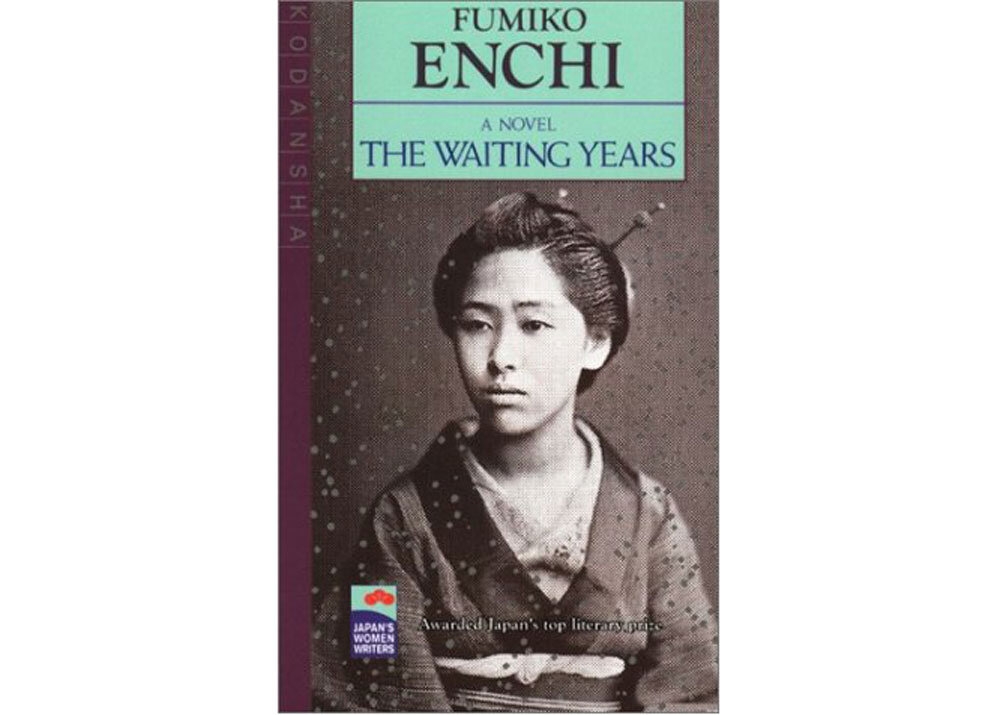
Why Should I Read This Book? This is a cherished tale of heartbreak and responsibility in post-Edo, pre-war Tokyo.
An often-overlooked archetype of Japanese literature, The Waiting Years tells the story of a diplomat'south wife, who has been tasked with travelling to Tokyo and selecting a new lover - from a lineup of geisha - for her own married man. This book explores the concept of responsibility, both political and familial. It is a heartbreaking tale that reeks of rigidity and the cost we pay for what is expected of us.
The Waiting Years – Available at Amazon
35. Almost Transparent Blue past Ryu Murakami
Translated by Nancy Andrew

Why Should I Read This Book? A sign of early on genius by Japan's about raw and brutal modernistic novelist.
Ryu Murakami is often overshadowed by another writer who happens to share his surname. In spite of this, Ryu Murakami is an author whose works oft exposed the filthy underbelly of Tokyo society that lurks just beneath the spotlessly clean streets we all know. Almost Transparent Blue is a semi-autobiographical novel who shifted a million copies in its outset six months, telling the story of Murakami's own youth in the world of 1970s Tokyo. In true Murakami style, it is a book of sex, drugs, and rock 'north' gyre!
Almost Transparent Blue – Bachelor at Amazon
36. Kitchen by Banana Yoshimoto
Translated by Megan Backus

Why Should I Read This Book? A progressive volume of honey and family years ahead of its time.
It'south a cliche to describe a writer as 'ahead of their time' but Banana Yoshimoto truly has been, on more than than one occasion. The best case of this is Kitchen, a book which explores young relationships in nuanced and complex means. Two young people, racked by death and grief and anxiety, trying to navigate the landscapes of love and friendship. Kitchen is a milestone of 20th century Japanese literature.
Kitchen – Available at Amazon
37. The Temple of the Golden Pavilion by Yukio Mishima
Translated past Ivan Morris

Why Should I Read This Book? It'due south one of Japan'southward literary greats exploring the ideals of beauty.
Even when focusing on dazzler, Mishima never strays far from anguish. In The Temple of The Gilt Pavilion, stuttering protagonist Mizoguchi becomes an acolyte at Kyoto's famous Golden Pavilion temple, where he obsesses over the aesthetics of the construction in reaction to the torment of his own babyhood. Loosely based on a true story, this pioneering work was ane of the master catalysts in Yukio Mishima'southward rise to literary stardom.
The Temple of the Golden Pavilion – Available at Amazon
38. The Gossamer Years past Michitsuna no Haha
Translated by Edward G. Seidensticker
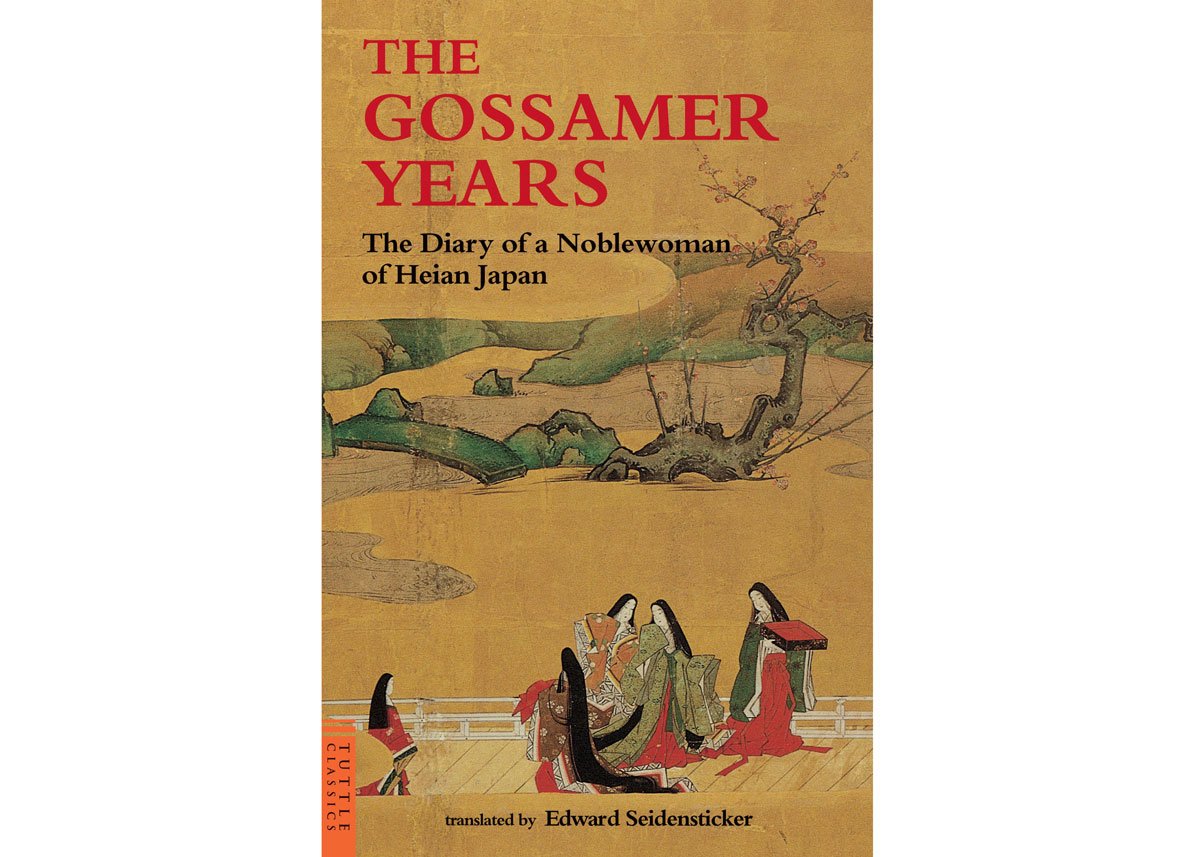
Why Should I Read This Book? It provides a lens into the lives of aristocratic women during the Heian menstruation.
Autobiographical and truthful to a fault, The Gossamers Years follows 2 decades in the life of its author, who goes by the nom de guerre Michitsuna no Haha (Michitsuna'southward mother). Dissatisfied at occasionally playing second fiddle to her lordly husbands numerous wives and concubines – which was mutual for feudal aristocrats to accept – the unnamed protagonist aims to subvert the union organisation of her mean solar day. The book's feminist overtones are emotionally resonant in a way that few other works of millennia-old literature were e'er achieved.
The Gossamer Years – Available at Amazon
39. The Woman in the Dunes by Kobo Abe
Translated by E. Dale Saunders

Why Should I Read This Book? Information technology is one of Nippon'southward nifty suspense novels.
Following the travails of protagonist Niki Junmpei, a beetle-searching apprentice entomologist, The Woman in the Dunes is a suspense-driven tale of imprisonment and existentiality. After missing the last autobus home whilst on an entomological trek, Jumpei takes shelter in a creepy village nether the shadow of sand dunes. Merely before long, he's existence held captive in a shack past the village's inhabitants. His only reprieve comes through reflections of his onetime life and dialogue with the woman who'due south in there with him.
The Adult female in the Dunes – Available at Amazon
twoscore. The Lonesome Bodybuilder by Yukiko Motoya
Translated by Asa Yoneda

Why Should I Read This Book? A fantastic book of curt stories near common people searching for liberation.
Magical realism and humans striving for validation are common themes in Yukiko Motoya's highly original short story collection, The Lonesome Bodybuilder. The acme of the book is the titular tale, which follows a weight-lifting housewife and her oblivious husband, while exploring the dynamics of a failing wedlock in nuanced ways. All eleven of the stories within are open to interpretation, however, leaving readers with tantalizing loose threads that are likely to draw them back for several more bites at the cherry.
The Lonesome Bodybuilder – Available at Amazon
41. Dragon Sword and Wind Child by Noriko Ogiwara
Translated by Cathy Hirano

Why Should I Read This Volume? Information technology'due south introduced readers to ane of the dandy Asian-inspired fantasy worlds ever created.
The first fantasy tale of Noriko Ogiwara, Dragon Sword and Air current Child is a Star Wars-esque tale of good vs evil, lite vs darkness, and a young protagonist thrust into a nation-destroying disharmonize equally she discovers the unfavorable roots of her heritage. Gear up in a distinctly Oriental quasi-medieval realm, showing Ogiwara's inimitable talent for worldbuilding, the book tackles themes of war and moral ambiguity while remaining attainable to younger readers. Upon its first publication 1988, it announced Ogiwara equally a serious proper noun in the globe of Japanese fantasy literature.
Dragon Sword and Air current Child – Bachelor at Amazon
42. Cloud of Sparrows by Takashi Matsuoka

Why Should I Read This Book? It's an epic narrative focusing on the last gasp of Edo-catamenia Japan every bit it alloyed with the West.
Commencement generation Japanese American Takashi Matsuoka fuses his Japanese blood with his American upbringing in this long and winding narrative which follows an eclectic cast of characters, both Japanese and colonial, during the terminal days of the Edo period. Japan has opened its doors to the W. The shogun faces revolt. A young warlord with rumored powers of foresight has ingratiated himself to a band of Christian missionaries. 1 of the great samurai of the era has embarked on a blood-soaked frenzy. All of these factors and more combine to tell a tale of clashing traditions, both niggling and enduring, that feels true to the struggles of late Edo. Cloud of Sparrows also perfectly tees up its sequel, Fall Span, which expands farther upon the cross-cultural saga.
Cloud of Sparrows – Available at Amazon
43. Japanese Ghost Stories by Lafcadio Hearn

Why Should I Read This Book? It's the greatest collection of Japanese ghost stories ever written.
Lafacadio Hearn was to the Japanese ghost story what the Grimm Brothers were to European fairytales: a pioneering collector and publisher of long-lost folklore. After settling in Matsue, a castle town on Nippon's western declension, in the late 1800s, Hearn married the daughter of a declassee samurai family, became enraptured by Japanese kaidan (thanks in office to his deeply troubled babyhood), and was somewhen all-powerful equally a Japanese subject under the name Koizumi Yakumo. Though Hearn was more a recounter of supernatural fiction than a creator, he believed securely in the power of these historic period-old narratives and portrayed them in startling prose that remains simply every bit gripping well over a century later. His collection, Japanese Ghost Stories, is the noon of the genre.
Japanese Ghost Stories – Available at Amazon
44. In Praise of Shadows by Junichiro Tanizaki
Translated by Gregory Starr

Why Should I Read This Book? Hither is a unique examination of the art and aesthetics of Japan past 1 of its virtually beautiful writers.
Junichiro Tanizaki is the only writer to appear on this list twice, only because his other book is fiction and here is a nonfiction essay. In under 100 pages, Tanizaki explores in deft item what makes Japan'due south creative aesthetics and so unique and important. Tanizaki valued - most worshipped - dazzler as it is seen and expressed by Japanese artists, and this essay gives usa an insight into that beauty from a main author. A unique and uniquely Japanese volume.
In Praise of Shadows – Available at Amazon
45. The Volume of Tea by Kakuzo Okakura

Why Should I Read This Volume? It is a unique examination of tea as it pertains to Japanese fine art and history. Fascinating.
Tea has a deep and ingrained connexion to Japanese history, fine art, and tradition, with chado meaning 'the way of tea'. Okakura's The Book of Tea is a lengthy essay which fully explores the furnishings of tea on Japan and the effects of Nihon on tea. Information technology is more than than a book on tea: it is an exploration of Japanese culture and traditions. Uniquely, this book was written in English for a Western audience with the intention of being educational, and it really is.
The Book of Tea – Available at Amazon
46. The M Autumns of Jacob de Zoet by David Mitchell

Why Should I Read This Volume? It'south a literary exploration of the relationship between the Edo-period Japanese and strange outsiders, written by former Japanese resident, David Mitchell.
Throughout well-nigh of the Edo catamenia, Japan was nether sakoku , a policy of national isolation during which foreigners were only allowed access to the Japanese archipelago upon official permission from the Shogun. In The Thousand Autumns of Jacob de Zoet, the titular Dutch clerk is stationed on Dejima, a manmade isle off the coast of Nagasaki built for the purposes of trading with the W. Through de Zoet nosotros learn of Japan'southward trepidation with the outside globe, wrapped up in a tale of covert romance, religious zealots, supernaturality, and the threat of looming warfare all told in the romping and elastic prose that has defined David Mitchell'due south novel-writing career.
The Thousand Autumns of Jacob de Zoet – Available at Amazon
47. The Inland Body of water by Donald Richie

Why Should I Read This Book? It is the best travel book set in Nippon.
Until his death in 2013, Donald Richie lived in Nihon for over half a century, during which time he became one of the foremost Western authorities on Japanese art, aesthetics and cinema. Arguably his greatest written piece of work – and at that place is a verifiable plentitude to option from – is The Inland Sea, an elegiac journeying through the islands between Shikoku, Kyushu and Honshu undertaken in the 1950s and 60s. Through prose dripping with profound insights, Richie explores the nature of the final Japanese who live free from the tides of industrialization all while unpacking his own relationship to the country. A timeless masterpiece of travel literature that serves every bit a blueprint for the genre.
The Inland Ocean – Available at Amazon
48. Goodnight Punpun by Inio Asano

Why Should I Read This Book? A stark and thoughtful piece of literary fiction in the course of a gorgeous manga.
Inio Asano is a revolutionary mangaka with the ability to explore enormous philosophical themes and ideas through the art of Japanese manga. Goodnight Punpun is his magnum opus: a manga which chronicles the life and growth of a young human being, beginning with elementary school and ending in his early twenties. Information technology is the story of navigating one'due south life in a modern landscape, and all the familial, social, academic, and professional stresses which come with it. Possibly the greatest manga ever written and certainly a work of literary genius. For more incredible manga artists, check out the ten Best Female Manga Artists You Demand to Know.
Goodnight Punpun – Bachelor at Amazon
49. An Artist of the Floating World past Kazuo Ishiguro

Why Should I Read This Book? It is a cut and mesmerising exploration of Japanese pride in the backwash of Globe War Two.
Kazuo Ishiguro, built-in in Japan but raised in the UK, has written ii books set in Nihon. His second novel, An Creative person of the Floating Globe, is his about circuitous and political novel, following the after years of an aged artist who disgraced himself by drawing propaganda posters for the Japanese empire during World War Ii. In a post-war earth, he is shunned but still living, and trying to grapple with his past, his art, and his choices. There are fewer books every bit moving equally this masterpiece past one of Nihon'southward Nobel Prize winners.
An Artist of the Floating World – Bachelor at Amazon
50. The Honjin Murders past Seishi Yokomizo
Translated by Louise Heal Kawai

Why Should I Read This Book? Hither is the first book in a long series from Japan'due south Agatha Christie.
Seishi Yokomizo was Japan'south Agatha Christie: a criminal offence and mystery author who adult his ain Poirot in Kosuke Kindaichi. This young, eccentric, and enigmatic detective cut his teeth on this, the beginning of Yokomizo's mysteries. The Honjin Murders tells the story of a hymeneals, the dark of which is upended by the deaths of the newlywed couple themselves. In this locked room mystery, set against the snowy wilds of Japan, Kindaichi is chosen in to solve it. This book twists and turns in the well-nigh fun and heady ways, making for 1 of the well-nigh satisfying locked room mysteries ever written.
The Honjin Murders – Bachelor at Amazon
JO SELECTS offers helpful suggestions, and genuine recommendations for high-quality, authentic Japanese art & design. We know how difficult it is to search for Japanese artists, artisans and designers on the vast cyberspace, and then we came upwardly with this lifestyle guide to highlight the most inspiring Japanese artworks, designs and products for your everyday needs.
All production suggestions are independently selected and individually reviewed. Nosotros try our best to update information, but all prices and availability are bailiwick to change. Equally an Amazon Associate, Nihon Objects earns from qualifying purchases.
Apr 8, 2022 | Fine art
RELATED JAPANESE ART
Nearly POPULAR
Source: https://japanobjects.com/features/japanese-books